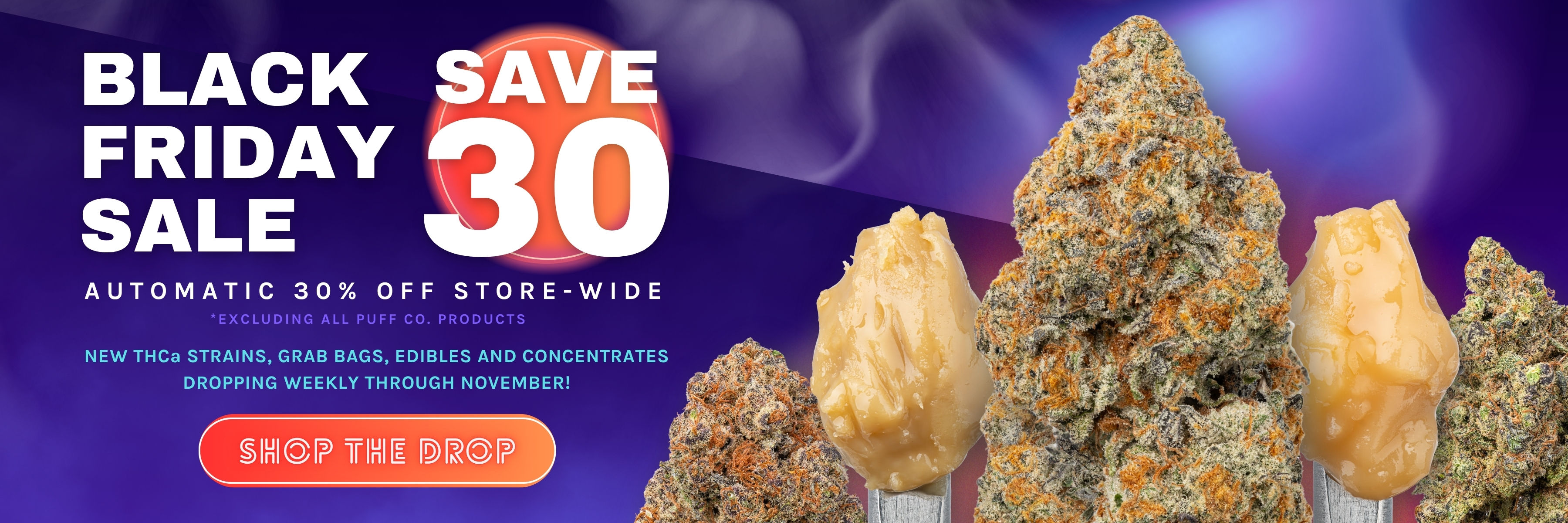How to Use THCa Pre-Rolls: Essential Information and Tips
Posted by WNC on Oct 6th 2025
THCa products serve various wellness applications, and understanding proper techniques promotes safety and effectiveness for those who choose to use these products. This information helps users make informed decisions about THCa flower consumption methods.
Before using any THCa products, consult with healthcare providers and ensure compliance with local laws in your area. Individual responses vary significantly, and what works for one person may not be appropriate for another. This guide emphasizes harm reduction and responsible practices for those who choose to use THCa pre-rolls.
What Should You Know Before Using THCa Pre-Rolls?
THCa (tetrahydrocannabinolic acid) differs significantly from THC in its natural state, remaining non-psychoactive until exposed to heat through decarboxylation. This conversion process is crucial to understand when learning about THCa pre-roll effects, usage, and legal insights, as it directly impacts safety protocols and proper techniques for these premium hemp products.
Legal considerations vary by location, making it essential to verify local regulations before purchasing or using THCa products. Many areas allow THCa flower sales due to its non-psychoactive nature, but laws change frequently.
Individual factors significantly influence THCa responses, including body weight, metabolism, previous experience with similar products, medications, and overall health status. Starting with minimal amounts allows users to assess personal tolerance safely.
Understanding THCa Decarboxylation During Heat Application
THCa converts to THC through decarboxylation when exposed to temperatures above 220°F (104°C). This chemical process removes a carboxyl group from the THCa molecule, creating psychoactive THC. The conversion rate increases with higher temperatures and longer exposure times.
This scientific understanding helps explain why raw THCa consumption produces different effects compared to heated consumption methods.
Understanding THCa Pre-Roll Characteristics and Environmental Considerations
THCa pre-rolls operate within specific environmental parameters that affect both product performance and safety considerations. Understanding these factors helps consumers make informed decisions about product selection and appropriate usage contexts.
Environmental Factors That Affect THCa Pre-Rolls
THCa pre-rolls perform optimally under specific environmental conditions that affect both the product integrity and the decarboxylation process.
Well-ventilated spaces prevent the accumulation of combustion byproducts and maintain air quality during any heating processes. Environmental factors like humidity, temperature, and airflow significantly influence how THCa products behave when exposed to heat.
Fire safety considerations remain paramount when dealing with any combustible hemp products. Proper extinguishing methods, heat-resistant surfaces, and adequate fire safety equipment represent essential safety measures. Understanding these environmental requirements helps consumers make informed decisions about when and where THCa pre-rolls might be appropriate.
Individual Response Variability and Timing Factors
THCa affects individuals differently based on numerous physiological and psychological factors, including body weight, metabolism, previous experience with hemp products, and current health status.
Research indicates that effects from decarboxylated THCa can vary significantly between individuals, with onset times ranging from minutes to longer periods, depending on various factors.
Response monitoring becomes crucial due to the unpredictable nature of individual reactions to cannabinoids. Physical responses may include changes in heart rate, coordination, or cognitive function.
Understanding these potential variations helps individuals recognize when to seek medical attention or discontinue use.
Safety Protocols and Health Considerations
THCa pre-roll safety involves understanding potential interactions with medications, underlying health conditions, and activities requiring full cognitive function.
Healthcare professionals emphasize avoiding the operation of vehicles or machinery after any THCa consumption, as the conversion to THC can impair judgment and reaction times for several hours.
Hydration management and substance interaction awareness represent important health considerations. Alcohol and other substances may interact unpredictably with THCa effects, potentially amplifying or altering the experience in dangerous ways. Medical consultation becomes especially important for individuals taking medications or managing health conditions.
Different Processing Methods and Applications for THCa Products
THCa pre-rolls can be processed and utilized through various methods that affect the final cannabinoid profile and user experience. These different approaches offer alternatives for consumers seeking specific cannabinoid properties or delivery methods.
Temperature-Controlled Processing Methods
Various processing methods exist for THCa products, each affecting the final cannabinoid profile differently.
Low-temperature processing techniques, such as controlled vaporization at temperatures between 138-160°C (280-320°F), may preserve more of the original THCa while still achieving partial decarboxylation. These controlled methods offer different cannabinoid profiles compared to higher-temperature combustion processes.
Temperature control technology has advanced significantly, allowing for precise heating that can target specific decarboxylation rates. This technological approach appeals to consumers seeking more control over the cannabinoid conversion process and final product characteristics.
Alternative Preparation and Processing Techniques
THCa pre-rolls can serve as raw material for various preparation methods beyond direct consumption. Some individuals disassemble pre-rolls to access the flower for tincture creation, where alcohol or oil extraction methods preserve cannabinoids for different applications.
Food preparation methods may incorporate THCa flower into cooking processes, though this requires an understanding of decarboxylation temperatures in culinary applications.
These alternative preparation methods allow consumers to access THCa compounds through different delivery systems while potentially avoiding combustion processes entirely.
Non-Psychoactive Preservation Methods
Cold processing techniques maintain THCa in its original acidic form, preserving the non-psychoactive properties that some consumers seek. Methods such as cold-pressing, juicing, or low-temperature extraction maintain the molecular structure of THCa without triggering decarboxylation.
These approaches appeal to individuals interested in the potential therapeutic properties of THCa without psychoactive conversion to THC.
Research into cold preservation methods continues to develop as consumer interest grows in non-psychoactive cannabinoid applications. These processing techniques require specialized equipment and knowledge to maintain product quality while preserving desired cannabinoid profiles.
What Are Common Smoking Mistakes and How Can You Avoid Them?
Understanding common errors and potential risks associated with THCa pre-roll consumption helps individuals recognize important safety considerations and problematic patterns.
Pacing and Dosage Control Mistakes
The most frequent error involves using too much too quickly without allowing adequate time to assess individual response.
Many users underestimate how long effects take to manifest, leading to overconsumption and potentially uncomfortable experiences. Always wait at least 15-20 minutes between uses, regardless of perceived effects.
Environmental and Safety Mistakes
Poor ventilation choices create unnecessary health risks and reduce overall safety during usage. Enclosed spaces without adequate airflow can concentrate combustion byproducts and create uncomfortable conditions.
Fire safety oversights pose serious risks, including inadequate extinguishing methods, inappropriate storage of materials near heat sources, and failure to completely extinguish used materials.
Key Takeaways for Safe THCa Pre-Roll Usage
This educational guide emphasizes that safe THCa pre-roll usage requires careful preparation, proper technique, and ongoing attention to individual responses.
Understanding the science behind THCa decarboxylation, maintaining appropriate pacing, and prioritizing environmental safety form the foundation of responsible usage practices.
Successful THCa pre-roll usage depends on combining scientific knowledge with practical safety measures, from proper ventilation and fire safety protocols to recognizing when to stop or seek help. Always verify local legal compliance and consult healthcare providers when appropriate, especially if you have underlying health conditions or take medications.
Ready to elevate safely? Explore our premium THCa pre-rolls, all tested for quality and purity. Whether you're just getting started or already experienced, WNC CBD is here to guide you with trusted products, expert education, and a commitment to your well-being.
Frequently Asked Questions (FAQs)
How Long Do THCa Pre-Roll Effects Typically Last?
Effects from THCa pre-rolls typically begin within 2-15 minutes of usage, though some individuals may experience longer onset times. Peak effects usually occur within 30-60 minutes and can last 2-6 hours, depending on individual factors including metabolism, amount used, and personal tolerance levels.
What Should You Do If You Experience Adverse Effects from Smoking THCa Pre-Roll?
Stop usage immediately upon experiencing any uncomfortable symptoms, including anxiety, rapid heartbeat, dizziness, nausea, or disorientation. Move to a comfortable, safe environment with fresh air and adequate ventilation. Sit or lie down in a secure location where you cannot fall or injure yourself.
Can You Store and Reuse Partially Used THCa Pre-Rolls?
Partially used THCa pre-rolls can be stored for later use if properly extinguished and stored. Ensure complete extinguishing using water or sand, then allow the material to dry completely before storage. Moisture trapped in stored materials can lead to mold growth and quality degradation.



